
03 | Care Compass
- Posted by Manaan Kar Ray
- Categories Weekly PROTECT Podcast
- Date January 21, 2022
Transcript
Host: Hi I am Mahi, your host for Episode 3, the Care Compass. In the previous episode you heard Navigating Rocky Waters. I am hoping that you have managed to see the short 5-minute film on YouTube, if you haven’t please do so, as Manaan mentioned it’s a great conversation starter and finding ways to talk about mental health challenges is essential in our fight against stigma. Navigating Rocky Waters, the film has been made in 12 more languages: Spanish, French, Portuguese, Mandarin, Hindi, Bengali, Marathi, Gujrati, Malayali, Tamil, Arabic and Hebrew. Do forward the link to the YouTube video to family and friends as well as the link for the podcast. It sends an important message regarding recovery from mental health, recovery is a reality and hope is crucial.
Manaan, what was the key driver for writing Navigating Rocky Waters?
Expert: When writing the original article, we were grappling with the fundamental contradiction at the heart of mental health services, that between care and control. We wanted to get across that there is no recovery without risk, and with the right care, the person has more control. But right care is a subjective opinion. We believed and still do that care needs to accommodate for positive risks that support the person’s right to fail on their recovery journey. In the failing lies the learnings for future resilience.
Host: In the failing lies the learnings of future resilience. However, does this change if the question is that of life or death, cause failing in the case of suicidal distress might mean a suicide attempt.
Expert: That is such an important point. Let’s stick with the same nautical metaphor and consider an accentuated version of Navigating Rocky Waters:
A lone craft tries to stay afloat in a tumultuous sea. It bobs up and down like a cork in rippled water. A crescendo of pathos crowd the night sky, the moon is engulfed, and no stars are left to guide. It’s dark, very dark. A blinding flash interrupts the foreboding of the clouds, followed by a deafening clap of thunder, striking terror into one’s soul. The lightning draws attention to the courageous strife of a lone sailor, fighting the elements, trying to keep a battered vessel afloat. The skyscraper waves, the torrential rain, the howling winds, there is no respite. The sea survival skills of the sailor are no match for life’s turmoil. With every splash, the spray rubs more salt into the wounds. There is water everywhere, above, below and all around, filling up the boat. Trapped in this psychological pain, the mind is slowly but surely watered down. Steady the keel or bail water? The boat is at its limit; it’s not going to self-right for too long. Bailing water is not going to save the night either. Even the flare is soaked, there is no hope. The question is, suffer the pain in silence and wait for the boat to capsize or drown the pain by stepping overboard.
Host: This passage goes up a few notches above what I narrated in Navigating Rocky Waters. I get the sense that you are trying to drive home that when rescue is the primary objective, the recovery journey might be considerably different to what was outlined in Navigating rocky waters. So what does recovery look like when someone is in deep suicidal distress?
Expert: Exactly, it is very different. In Navigating Rocky Waters we talked a lot about the person’s agency but in this situation, most clinicians would be willing to sacrifice the individual’s innate agency and their right to fail and other recovery principles on the altar of risk. One may claim that in the long run, a recovery-oriented approach will provide the person with more control, and they will be more resilient to life’s storms, but in the short run, it is a risky call to make. One that is fraught with doubt and danger and one that professionals encounter frequently.
Host: So, what do professionals do?
Expert: Essentially the point I am making is, the difficult balancing act between risk and recovery intensifies many folds in a suicidal crisis. This can only be struck in partnership with the person and their family and to get them on board and to understand the finer nuances of recovery oriented practice we recommend using the Care Compass, it’s a theoretical construct with a number of practical uses that helps in finetuning “Control in Care”.
Introducing the Care Compass
Host: I am looking at the care compass, so it has 2 axes which gives rise to four quadrants. Will you please describe it for our listeners?
Expert: I can have a go at describing it but it is so much easier if listeners are actually looking at the diagram. As you mentioned the Care Compass has two axes: x represents resilience in the distressed individual (East or the right end of the axis: resilient; +5 and West of the left end: fragile; -5), and y represents the principal focus of care delivery for the professional (North or the top end: self-reliance; +5 and South or the bottom end: safety: -5). The numbers + or – 5 does not indicate right or wrong, it is just to graphically demonstrate the degree of resilience in the person on the y axis and the clinician’s primary focus on the x axis. The two axes gives rise to four care quadrants, bottom left or south west: Prudent Care, top right or north east: Permissive Care, bottom right or south east: Prescriptive care and top left or North West: Precarious Care.
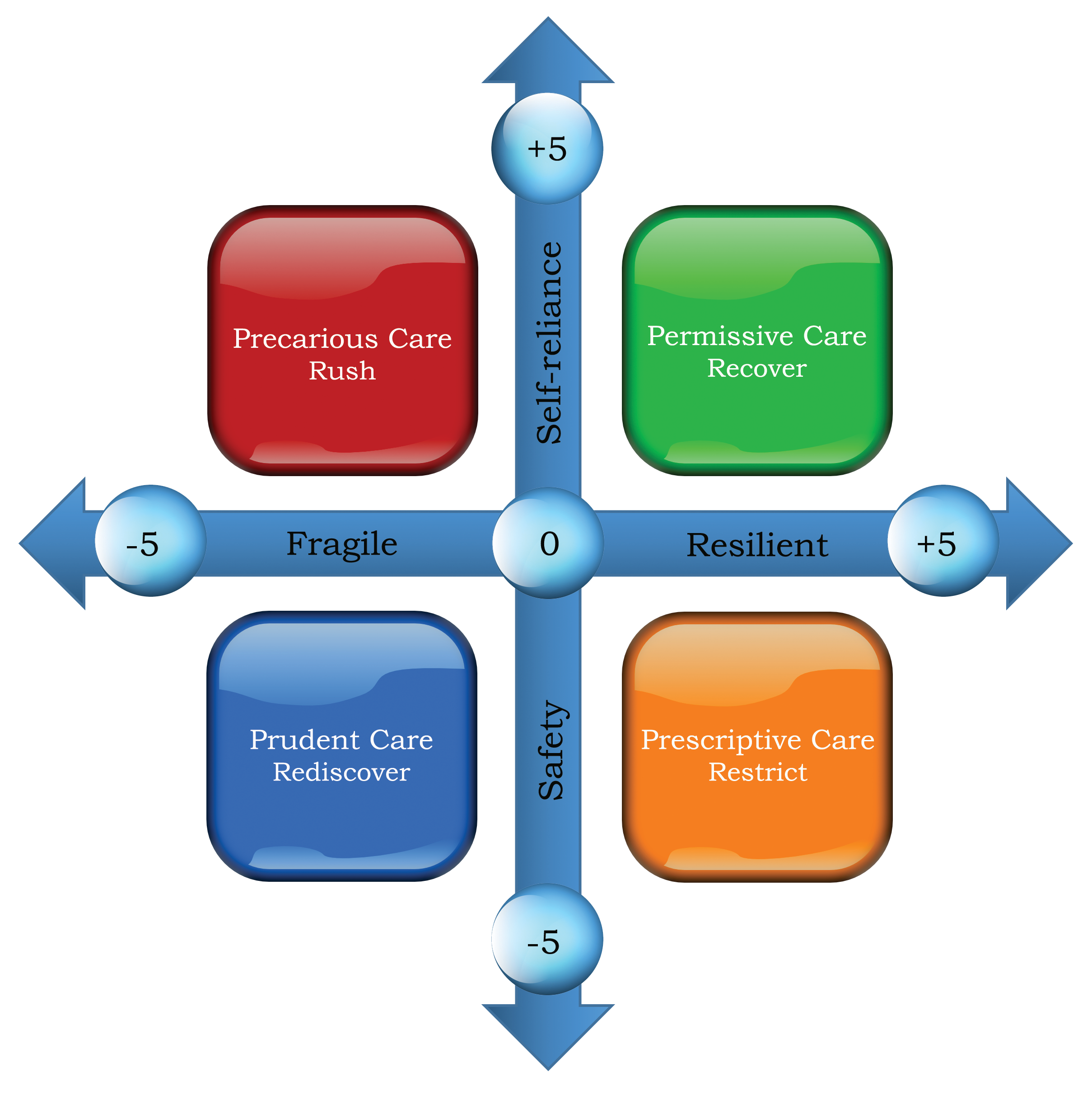
Host: All figures and images are available at www.progress.guide/blog, navigate to episode 3. As we go through these four care quadrants, it will be much easier to internalize if you can visualize it as you are listening. Lets start with the bottom left quadrant, Prudent Care.
Prudent Care
Expert: The key word for Prudent Care is Rediscover, it starts at the south west end, -5, -5, so people are at their most fragile, and the principal clinical focus is safety. Risk-taking is understandably minimal; however, measured and prudent risks under close supervision and guidance form stepping stones to the rediscovery of inner resources, strengths, hope and aspirations. In keeping with Navigating Rocky Waters people are at their most fragile and need to follow the light of the lighthouse back to solid ground. Although risk-taking is minimal; the goal to hand control back remains primary. This is done through judicious risk-taking, hence the name of the quadrant is Prudent Care, it is the prudent risks that the professionals will take that will help the person rediscover their strengths.
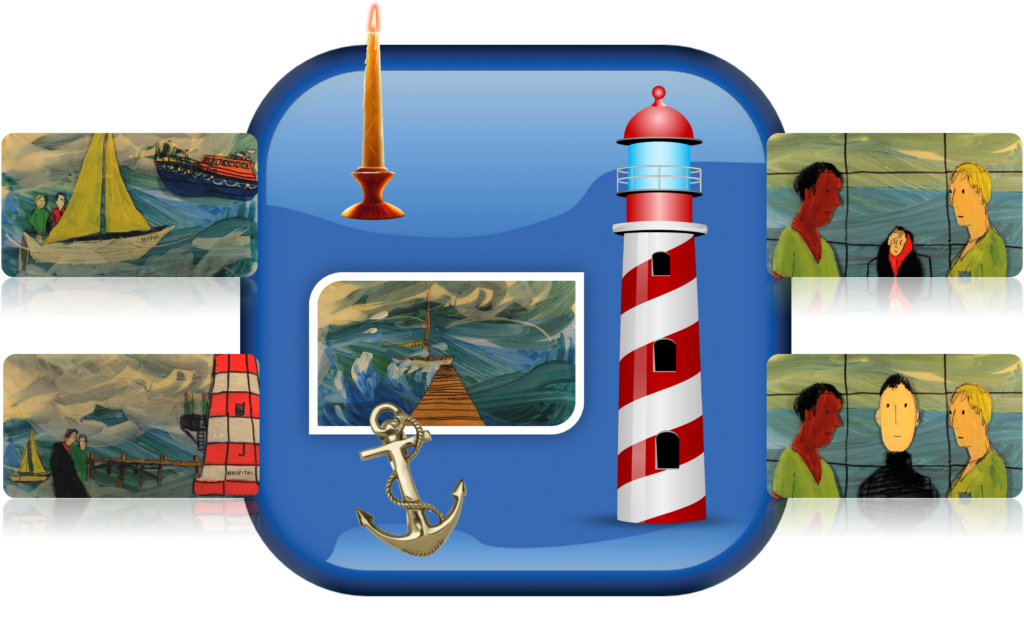
Permissive Care
Host: Diametrically opposite in the top right corner is the quadrant of permissive care, is this the other end of the recovery journey?
Expert: Yes that is correct the key word for this quadrant is Recover. It stretches out to North-eastern tip of +5, +5. People feel resilient, and the focus shifts from safely navigating the crisis to becoming self-reliant. The need for frequent or regular contact progressively decreases, and the person resumes control of their life and gains mastery of their mental health challenges. In Navigating Rocky Waters we describe this as people feeling resilient and ready to captain their lives. This quadrant is all about finding personal meaning and purpose in life’s pursuits. Services will play a small part and will gradually step back altogether.
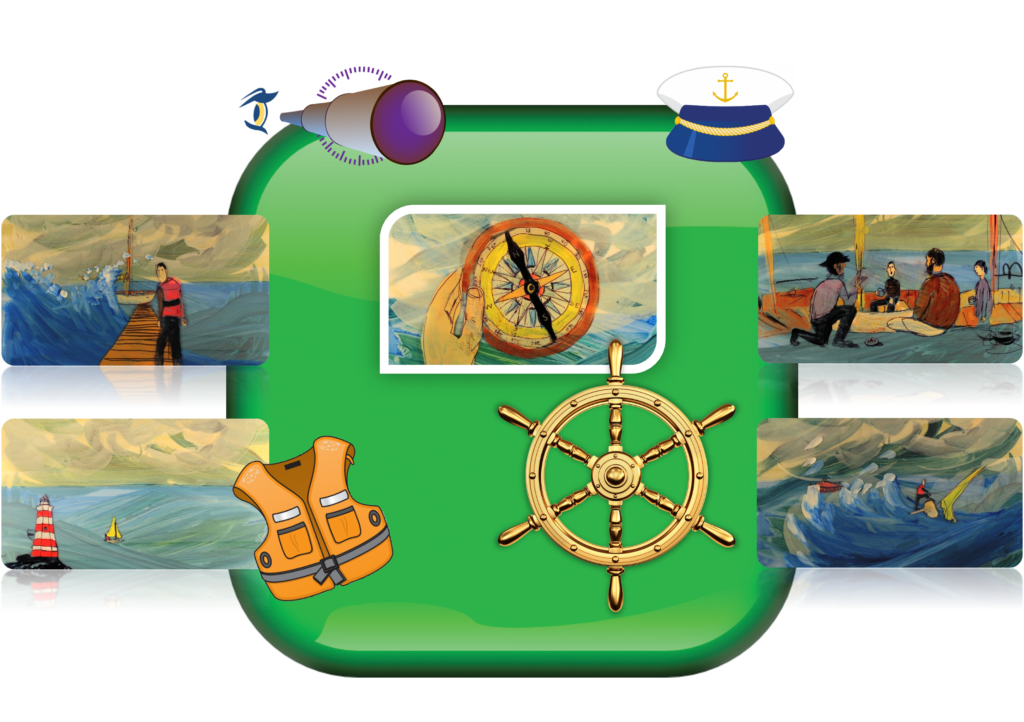
Prescriptive Care
Host: The quadrant below Permissive Care, the bottom right quadrant called Prescriptive Care, people are feeling resilient too as they are at the +5 end of the x axis, what is different here?
Expert: You are right in the south-east corner people are feeling resilient too, but the focus of care has remained on safety. The key word for the quadrant of prescriptive care is Restrict. At times, circumstances are such that a safety net around the person becomes the sole focus. Given, the readiness of the person to move on with their life, the care provided can be thought of as risk-averse and fairly restrictive. It fosters dependence and can stifle growth in the person. However, the person is fairly resilient and increasingly feels trapped like a fish in a fishing net, spending all their energy fighting to free themselves.
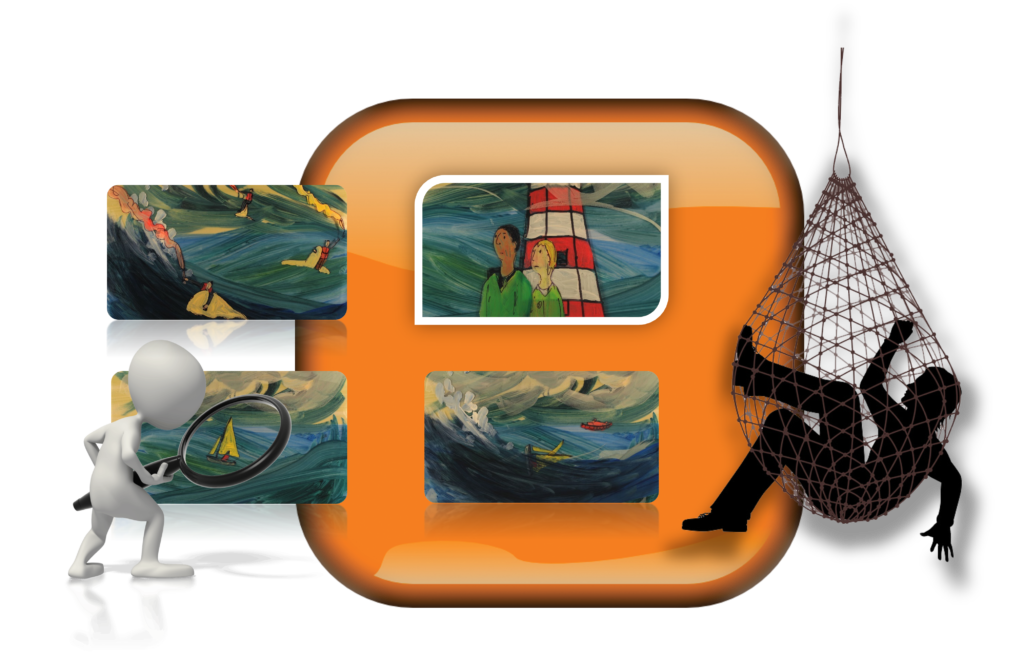
Precarious Care
Host: This must mean that the top left quadrant of Precarious Care which is diametrically opposite to Prescriptive Care must be describing the reverse phenomenon, at least the name implies that.
Expert: Yes that’s the case, the north west quadrant stretches out to -5, +5. -5 on the x axis means people are still quite fragile, but instead of focusing on safety, the clinical priorities have shifted prematurely to gaining self-reliance as indicated by the +5 on the y axis. The person may not be ready to take on the proposed risks, and the decision-making may appear rushed and sometimes reckless. In the nautical metaphor of Navigating Rocky Waters we would have described this is akin to being a castaway on a raft without much needed essential support and supplies or advanced sea survival skills for the open waters. Sometimes premature risky decisions or actions may put a fragile person in further jeopardy.
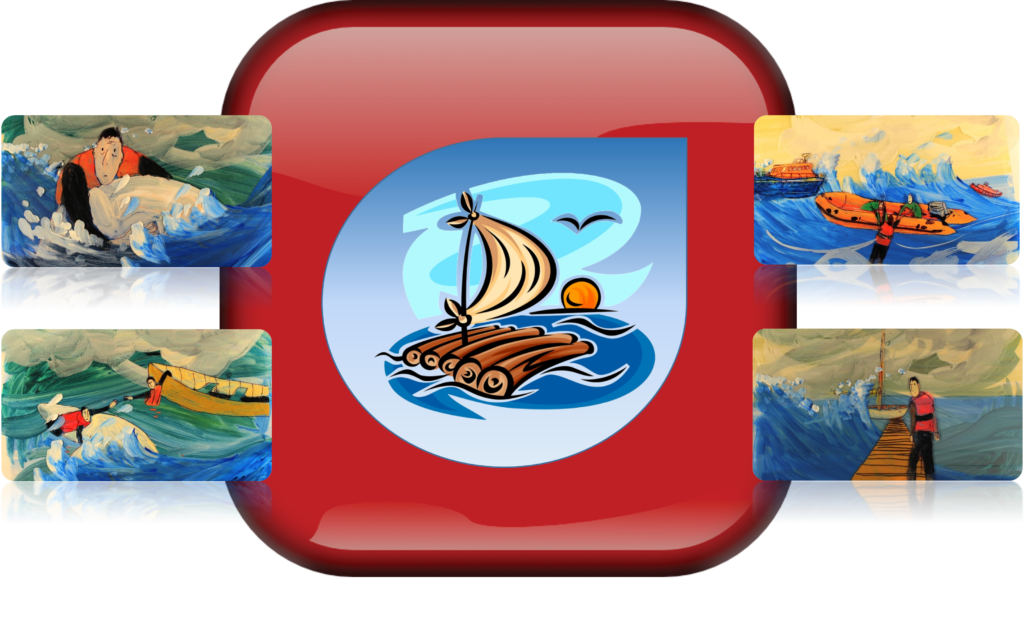
Host: I am getting the impression that the Care compass is a reflective tool or a conversation aid. Through the accentuated version of Navigating Rocky Waters you conveyed that safety is the first priority in a suicidal crisis, and it often entails the loss of personal freedoms. We know that feeling that the locus of control is no longer within one’s sphere of influence engenders a sense of helplessness and may perpetuate suicidal feelings. In introducing the Care Compass you said that it can be used to fine tune control in care, so is it an internal compass for professionals to work out how much to restrict or how much risk is advisable?
Expert: Actually a step further, both internal and external. In these circumstances, in addition to what you said the care compass can also be used as a visual prop to discuss with the person and their family where they currently are on the risk vs fragility map and why such restrictive steps are needed. Delivering person-centred care involves individualised treatment based on the person’s history and current presentation, and the care compass aids this conversation and supports shared decision making. It also displays where they are headed and that recovery is a reality. If the person has had previous challenges that they have overcome, mapping them might also bolster hope.
Host: While describing the Care Compass you kept using the nautical metaphor of Navigating Rocky Waters, is there another version of Navigating Rocky Waters.
Expert: Nothing as polished as Navigating Rocky Waters, the truth is that a metaphor as fitting as Navigating Rocky Waters, an author only writes once in a life. You can think of the bits related to the Care Compass as an extension or a sequel.
Host: Will you share this with our audience?
Expert: I will give it a go.
Care Compass | Sequel to Navigating Rocky Waters
On the recovery journey, healthcare professionals take on many roles. In the darkest hours we serve as light house operators guiding people to the shore. When the going is good and the person is steering, we serve as navigators. Sometimes we get the delicate balance of risk and recovery wrong. In our attempt to create a safety net we may make a person feel trapped and the converse may also be true when we focus solely on self-reliance and make them feel like a cast away without sea survival skills.
Lighthouse Operators (Prudent Care)
When concerns are high, it will be prudent for the person in distress to spend some time on solid ground and not venture out to sea. The boat might need to be towed to the shipyard for running repairs, and the struggling sailor might need to spend some time in the lighthouse recuperating. Inside old lighthouses, there is a tiny beacon that is surrounded by mirrors that can amplify the light. Mental health inpatient staff can serve as those mirrors for a person whose hope is dwindling, effectively being hope vendors. However, for the exhausted mind and body, the lighthouse climb is a daunting prospect. The lighthouse operators have to take time and display patience and empathy. Each and every prudent risk is a step away from the darkness, towards the light. When the going gets tough, the promise of light at the end of the climb may not be enough. Plotting the trajectory on the care compass can help light up candles of hope and give impetus to take the next step in line with prudent care. Even in a restrictive environment, visual representation of progress can capture hope. This is essential for relational safety. The care compass could be instrumental in conveying that it is only a matter of time before they will captain their life again. In the lighthouse, the light that the mirrors reflect back can amplify a beacon make it shine bright once again.
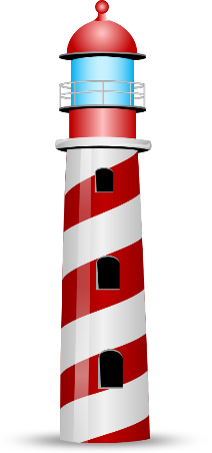
Navigators (Permissive Care)
In time, the sailor will be ready for some advanced sea survival skills. However, these skills cannot be gained on land, and one has to get back on the water again. It is time for the lighthouse operators from the hospitals to hand over to the navigators in the community. This is a daunting prospect both for the person and the professionals. However, without risk, there is no recovery, but it needs to be thought through properly. Safety planning in terms of a commitment to keep the life jacket on in the early days is essential. As the navigator we have to ensure that the person understands that the navigator’s role is to support and not to steer. The sailor might not feel ready to be the captain of their vessel yet, but steering is their privilege as well as their responsibility. One must show courage to catch a favourable wind. Confidence may be bolstered if in our roles as the navigator, we share the experience of previous journeys. Clearly, no two journeys are ever the same, but if equipped with a compass and the necessary charts, the experience holds us the partnership in good stead to avoid the eddies and currents. However small, every boat benefits from a crew. Bringing friends and families on board will bolster safety in the here and now and future proof the journey. As care evolves from prudent to permissive, it involves a slow but steady stepping back of services and the person steering their vessel with their own crew. The distant light of the lighthouse will fade away, and so will the role of the navigator as they proactively hand responsibilities back to the captain and the new crew of natural support. As they ride the waves and rise to the challenges that life brings, their advanced sea survival skills and self-righting abilities will continue to develop and mature.
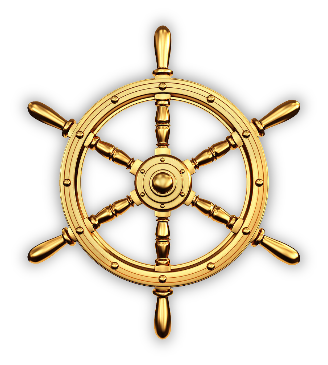
Trapped in a Net (Prescriptive Care):
There are situations where a professional might find themselves extremely reluctant to take risks with a person who is reasonably resilient. The care delivered becomes paternalistic and may stifle growth and self-reliance. Decision making is not shared, and considerable energy could get wasted on both sides as the professional strives to maintain control, and the person tries to evade and fight the system delivering care. When prescriptive care is on the menu, stepping back and allowing the person needing care to lead the journey is a highly anxiety-provoking experience for staff. This might be person-specific, e.g. knowledge of the person previously almost drowning when left to their own devices or not playing their part like keeping their life jacket on and also resisting care when found to be unwell. Thus, a paternalistic desire to hold on emerges as there is significant anxiety about an early distress flare getting missed. It might also be professional specific, e.g. a recent experience of a ship wreck or a near miss and in the investigation that followed, the light house operator felt blamed for the light not being bright enough or the navigator felt blamed for not spotting the iceberg in the way. Some professionals are also, by nature, cautious and risk-averse. Sometimes organizational culture could promote risk-averse prescriptive care as well. Irrespective of the cause, there is considerable anxiety in letting go, and a so-called safety net gets woven. Afterall better be safe than sorry. But, one has to pause and ask, better for whom? Is it better for the light house operator as it gives a better night sleep if the person stays on land, or is it genuinely better for the sailor being supported? After all boats are not meant for the water. One should keep in mind that prescriptive care has many cons. It is by and large well-intentioned, but often the net is what traps the person and stops them from pursuing goals that are meaningful to them. Either the net creates dependence and over-reliance on services, or considerable energy is lost in the struggle to break free. Either way, it stifles growth.
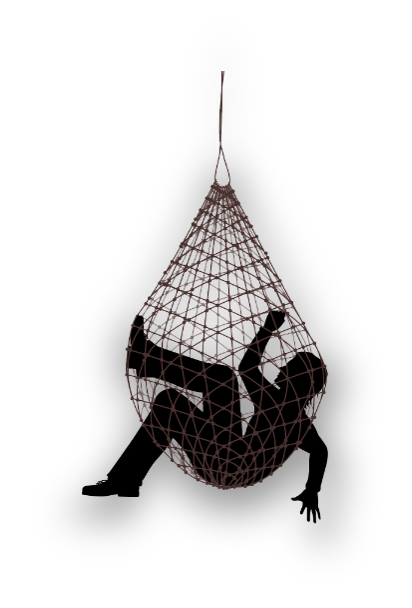
The Castaway (Precarious Care)
At times the opposite may happen. Many would describe this as care that is rushed, poorly thought through and sometimes even reckless. The person is still quite fragile, but they have been left to fend on their own or without the necessary support. It is as if, with minimal sea survival skills and equipment, they have been cast away on a raft that drifts into open waters. This may relate to individual professional practice that peers working in a similar arena, the light house, the ship yard or the open waters, may not agree with and consider unacceptable.
However, it is generally an outcome of resource-led decisions, e.g. it is not uncommon for 4-5 patients to be vying for 1 the last bed in the light house. The real world of prioritisation does leave many people short of what they would have needed or got under ideal circumstances. Unfortunately organisations, whether that be a shipping company, coast guard or air sea rescue, they are all very wary of their professionals calling a resource led decision for what it is. A resource led decision sets up a vicious cycle in which the light house operator or the navigator spends increasing amounts of time justifying decisions and actions on paper. But this does little to enhance safety for the sailor who needs support. They could end up going from storm to storm before their battered vessel gets properly repaired. Not only does this put the sailor in harm’s way, but it is also a false economy for services. The coast guard and air sea rescue have to respond to repeat crisis which is resource-intensive. Needless to mention, that every time a boat keels over, it destroys confidence, making it harder for the person to sail solo. Using the Care Compass to maintain awareness of risk thresholds may help temper one’s risk-taking. It may not remove the clinical reality of having to make triage decisions, but it could forewarn the professionals regarding the need for added rigour in their safety planning.

However, it is generally an outcome of resource-led decisions, e.g. it is not uncommon for 4-5 patients to be vying for 1 the last bed in the light house. The real world of prioritisation does leave many people short of what they would have needed or got under ideal circumstances. Unfortunately organisations, whether that be a shipping company, coast guard or air sea rescue, they are all very wary of their professionals calling a resource led decision for what it is. A resource led decision sets up a vicious cycle in which the light house operator or the navigator spends increasing amounts of time justifying decisions and actions on paper. But this does little to enhance safety for the sailor who needs support. They could end up going from storm to storm before their battered vessel gets properly repaired. Not only does this put the sailor in harm’s way, but it is also a false economy for services. The coast guard and air sea rescue have to respond to repeat crisis which is resource-intensive. Needless to mention, that every time a boat keels over, it destroys confidence, making it harder for the person to sail solo. Using the Care Compass to maintain awareness of risk thresholds may help temper one’s risk-taking. It may not remove the clinical reality of having to make triage decisions, but it could forewarn the professionals regarding the need for added rigour in their safety planning.
The direction of travel that the Compass provides will help us get the balance right, neither will there be cast aways, nor a sailor, trapped like a fish in a net fighting to escape. From the lighthouse, operators will help sailors get back on water again and navigators will support in the open seas. In time the sailor will sail solo again, after all most of us most of the time captain our own lives.
You may also like
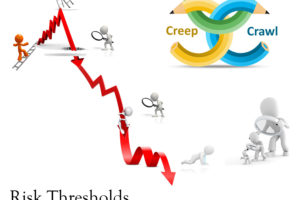
19 | Creep Crash Crawl
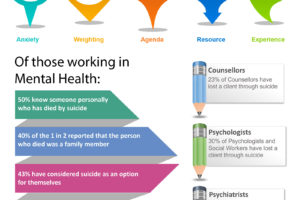
18 | AWARE 5 – Experience

